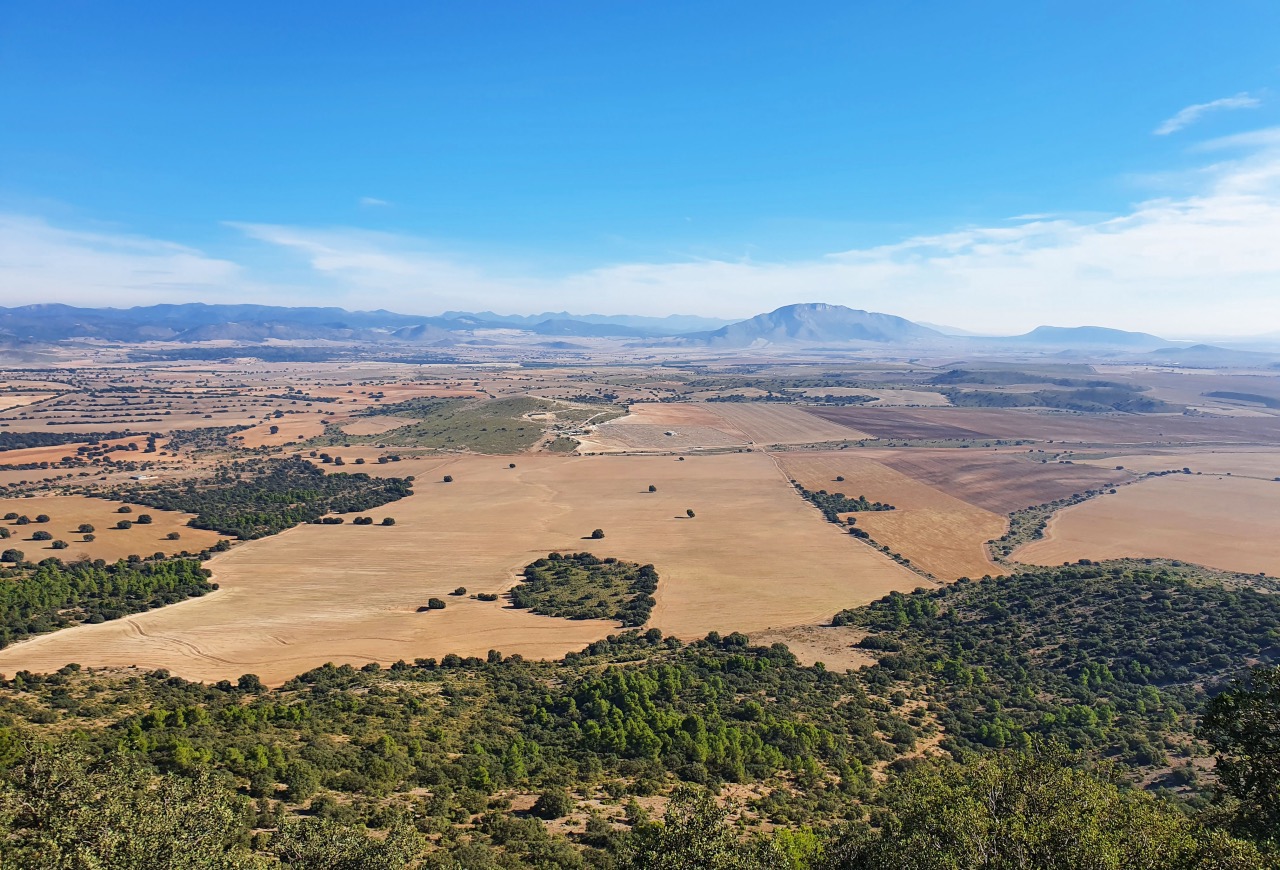Commonland transforms degraded landscapes into thriving ecosystems and communities. Its holistic approach focuses on large-scale, long-term restoration initiatives that integrate ecology, land use and business

In brief
- Due to continued mismanagement, 40% of the planet’s land is degraded, according to the latest UN Convention to Combat Desertification (UNCCD) report
- Commonland is committed to transforming 100 million hectares of degraded land into thriving ecosystems and communities by 2040
- The organisation undertakes large-scale, long-term landscape restoration projects that integrate ecology, land use and sustainable business models
- The projects are financed by a mix of philanthropic money, blended capital structures, seed capital and impact investments
The situation is disastrous, but not yet lost. That is, in a nutshell, the conclusion of the 2022 edition of the UNCCD Global Land Outlook report.
Its main observation: due to continued mismanagement 40% of the planet’s land is degraded, affecting directly half of humanity and threatening roughly half of global GDP.
The UN Convention to Combat Desertification’s (UNCCD) evidence-based flagship report, five years in the making and involving 21 partner organisations, is considered the most comprehensive consolidation of information on land degradation ever assembled.
The report provided the input for the UNCCD’s 15th session of the Conference of Parties, which was held in Abidjan, Côte d’Ivoire this month. While the report can be seen as a desperate final warning, it also offers hope.
It documents hundreds of examples from around the world that demonstrate the potential of land restoration.
One of the organisations committed to large-scale and long-term landscape restoration initiatives is non-profit system developer Commonland. Its mission is to transform degraded landscapes into thriving ecosystems and communities, based on sound business cases. The foundation uses philanthropic money, blended capital structures, seed capital and impact investments to fund its projects.
‘Doers, not dreamers’
Founded in 2013 by the Dutch ecologist Willem Ferwerda and businessman Wijnand Pon, with support from the IUCN Commission on Ecosystem Management and the Rotterdam School of Management, Commonland says it is on track to achieve its goals. “We are doers, not dreamers”, says Ferwerda, who is a former director of IUCN The Netherlands.

Together with its partners, the organisation is committed to transforming 100 million hectares of degraded land into thriving ecosystems and communities by 2040. That’s an area twice the size of Spain. “Ambitious, but with the right partners and focus, definitely achievable,” notes Ferwerda.
To put this figure in perspective: the UNCCD member states have pledged to restore 1 billion degraded hectares before 2030, without however securing the necessary funds to realise that goal.
Commonland is currently involved in eight large restoration projects. The ones in Southern Spain, West-Australia, South Africa and the Netherlands, which started in the 2014-16 period, are the most advanced so far.
Holistic framework
Ferwerda describes the Commonland’s approach: “The core is our long-term commitment. When we start working in a landscape, we are there for at least twenty years. That’s the minimum period needed to bring back a landscape’s ecological foundation. Furthermore, we focus exclusively on ecosystems, large areas of at least one hundred thousand hectares.”
Finally, he adds, the organisation works on the basis of what it describes as its ‘4 returns framework’, a holistic framework developed to help stakeholders achieve “inspiration, social returns, natural returns and financial returns”.
“Regenerating landscapes has to go hand-in-hand with revitalising local communities”, Ferwerda says. In 2021, the UN Decade on Ecosystem Restoration recognised the 4 returns framework as a tool to scale up landcape restoration.
The framework breaks down landscape restoration into three distinct landscape zones: a protected natural zone, a combined zone where restoring the top soil and biodiversity goes hand-in-hand with regenerative agriculture, agroforestry and rotational grazing, and an economic zone for value added activities like processing in mostly urban areas.
Commonland found that an average of around €10m is needed per landscape zone to set up and support the process over a 20-year period.
Commonland’s landscape finance expert Jasper Bertels explains the current funding is still coming from philanthropy. However, he says, it could also come from other types of government funding, local funds or blended finance structures in the near future.
Different financing sources are needed to scale up efforts, including setting up business cases, starting up or converting companies to engage in regenerative agriculture, agroforestry and rotational grazing.
“In Australia, we raised money by bringing a company we helped to start up to the SME stock market. In Spain, we are involved in four new companies, which now also includes money from impact investors. In the Netherlands, we have issued bonds for private investors to buy agricultural land, which allows farmers to finance the transition to regenerative agriculture.”
Another instrument are donor-advised funds to enable long-term grants funding to catalyse regenerative agriculture, and support conservation and habitat restoration, such as the €2.5m fund recently launch by Dutch impact investor and philanthropist Corien Botman which backs regenerative agriculture in Europe and Africa.
Momentum
The quest for additional capital is proving successful due to the growing interest among investors in biodiversity as a new asset class. “The momentum is there. More and more financial institutions understand the importance of investing in nature-based solutions.”
However, the absence of track records and not enough solid business cases mean many investors are still reluctant. Regenerative finance, as Bertels calls it, must come from impact investors and seed capital funds in the first place. Its catalytic effect should help bridge the gap towards other types of investors.
It’s all about a new perspective on value: “From the current short-term financial value to long-term integrated value, comprising natural, social and financial value”, says Bertels. “Institutional investors are increasingly recognising nature-based solutions as landscape restoration as an asset class.”
Bertels concludes by saying Commonland is currently working with a commercial bank in setting up a vehicle to invest in regenerative business cases, calling for more participation of impact investors in the sector. “Their contribution remains essential to make this whole endeavour a success.”





